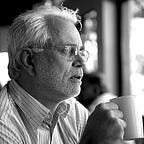Bloodsport
Bloody noses, cracked ribs, even death on early roller coasters
ROLLER COASTERS enjoy unprecedented popularity with both the riding public, who enjoy the latest thrills, and theme park management, who enjoy the enthusiastic crowds new coaster technology fetches.
While a modern roller coaster packs a tremendous wallop for the buck, thrills experienced by nineteenth-century coaster enthusiasts who dared venture on the weekends to the coal mines, the timber mills, or the end of the trolley lines got a truly death-defying experience for pennies on the dollar without the inconveniences of built-in safety features that today only provides an illusion of real danger. Any new wooden coaster may look similar to some of those turn-of-the-century deathtraps, but the hidden computer-aided design of today’s roller coasters would give turn-of-the-century enthusiasts similar tremendous thrills without the very real life-threatening peril inherent in those early rides.
While today’s coasters have practically reached the ultimate in safety, those early experiments were polar opposites, as safety always took a back seat to profit in those early days of pay-as-you-ride. In fact, from the 1870s to 1930, reports of injuries or even deaths frequently increased a ride’s popularity, and in some cases persuaded the owner to charge a modest fee for patrons…
